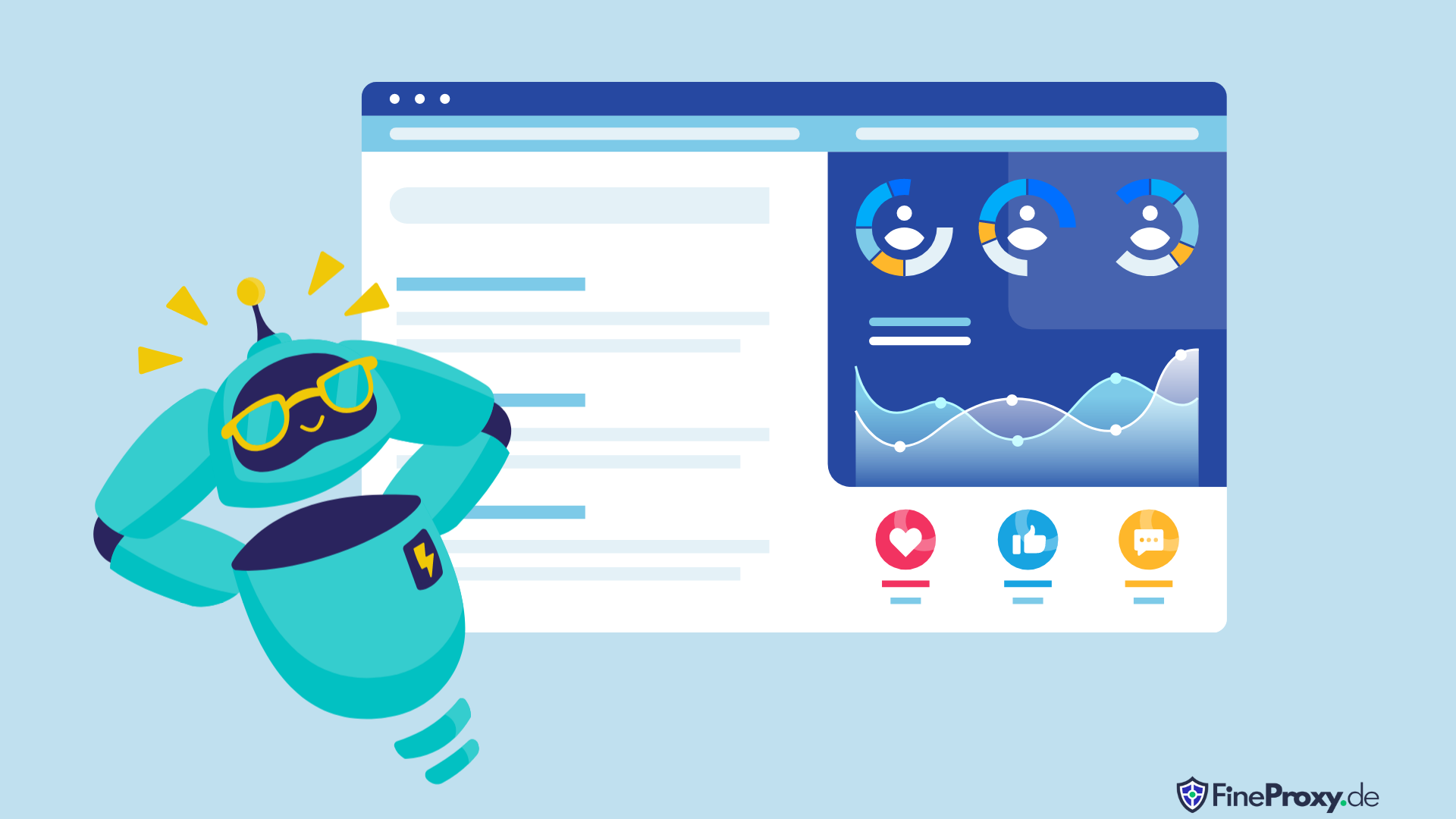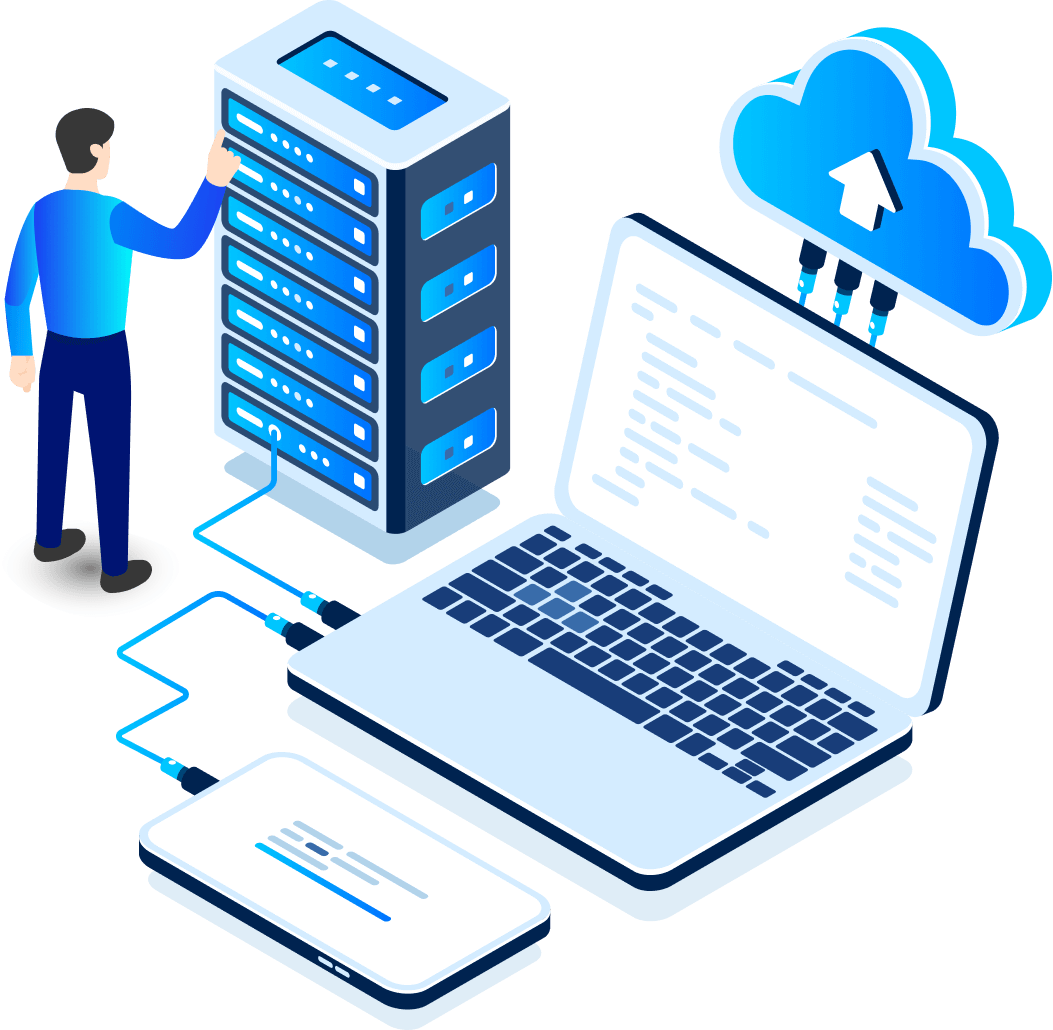
Embarking on the adventurous journey of web crawling can be both thrilling and challenging, as one navigates the labyrinthine alleys of the internet in search of valuable data. In the vast digital universe, the art of web crawling has emerged as a critical skill, enabling us to efficiently mine information, develop insights, and make sense of the ever-expanding world wide web.
In this enlightening article, we will traverse the intricate terrain of web crawling, uncovering the differences between web crawling and web scraping while exploring a range of strategies and technologies that will elevate your web-crawling prowess.
From the dynamic realm of JavaScript websites to the powerful simplicity of Python, we will guide you through a multitude of tips and techniques to ensure your web-crawling expedition is smooth, effective, and unimpeded.
Table of Contents
So, buckle up, and prepare to embark on an exciting voyage into the captivating world of web crawling!
Web Crawling vs. Web Scraping
While web scraping and web crawling are often thought to be the same thing, and both are used for data mining, they have key differences. We will explore these differences and help you determine which approach best suits your needs and business goals.
Key Differences
Simply put, web crawling is what search engines do: they navigate the web, seeking any available information, and follow every accessible link. This general process aims to gather as much information as possible (or even all) from a particular website. Essentially, this is what Google does – it views the entire webpage and indexes all available data.
On the other hand, web scraping is employed when you want to download the collected information. Web scraping (also known as web data extraction) is a more focused process. By customizing commands and utilizing scraping proxies, you can extract specific data from your target website. Subsequently, you can download the results in a suitable format, such as JSON or Excel.
In some instances, both web crawling and web scraping may be used to achieve a single objective, essentially functioning as steps one and two in your process. By combining the two, you can gather large amounts of information from major websites using a crawler and later extract and download the specific data you need with a scraper.
4 Web Crawling Strategies
In general, web crawlers visit only a portion of web pages based on their crawler budget, which can be determined by factors such as the maximum number of pages per domain, depth, or duration.
Many websites offer a robots.txt file that specifies which parts of the site can be crawled and which are off-limits. Additionally, there's sitemap.xml, which is more detailed than robots.txt, guiding bots on which paths to crawl and providing extra metadata for each URL.
Common uses for web crawlers include:
- Search engines like Googlebot, Bingbot, and Yandex Bot gather HTML from a substantial part of the web, indexing the data to make it easily searchable.
- SEO analytics tools collect not only HTML but also metadata, such as response time and response status, to identify broken pages and track links between domains for backlink analysis.
- Price monitoring tools crawl e-commerce websites to locate product pages and extract metadata, particularly prices. These product pages are then revisited periodically.
- Common Crawl maintains a public repository of web crawl data, like the May 2022 archive containing 3.45 billion web pages.
How to Crawl JavaScript Websites
Crawling JavaScript websites can be more challenging than crawling static HTML pages because the content is often loaded and manipulated by JavaScript code. In order to crawl such websites, you need to use a headless browser that can execute JavaScript and render the page's content. One popular choice for this task is the combination of the Puppeteer library and the Node.js runtime environment.
Here is a step-by-step guide to crawl JavaScript websites using Puppeteer and Node.js:
1. Install Node.js
Download and install the latest version of Node.js from the official website (https://nodejs.org/).
2. Create a New Project Directory
Create a new directory for your project and navigate to it using the command line.
mkdir js-crawler
cd js-crawler
3. Initialize a New Node.js Project
Run the following command in your project directory to create a new package.json file with the default settings.
npm init -y
4. Install Puppeteer
Install Puppeteer by running the following command in your project directory
npm install puppeteer
5. Create a New JavaScript File
Create a new file named
crawler.jsin your project directory, which will contain the code for crawling the JavaScript website.
6. Write the Crawler Code
Open
crawler.jsand add the following code:
const puppeteer = require('puppeteer');async function crawlJavaScriptWebsite(url) {
Launch a new browser instance
const browser = await puppeteer.launch({ headless: true });Create a new page in the browser
const page = await browser.newPage();Navigate to the target URL
await page.goto(url, { waitUntil: 'networkidle2' })Extract data from the page using
evaluate()
const data = await page.evaluate(() => {Write your custom JavaScript code here to extract the data you need. For example, let's extract all the headings (h1 elements) from the page.
const headings = Array.from(document.querySelectorAll('h1')).map(heading => heading.textContent);
return {
headings,
};
});
Close the browser
await browser.close();Return the extracted data
return data;
}Usage example:
crawlJavaScriptWebsite('https://example.com/')
.then(data => console.log(data))
.catch(err => console.error(err));Replace the
https://example.com/URL with the target website URL and customize the
page.evaluate()function to extract the data you need.
7. Run the Crawler
Execute the following command in your project directory to run the crawler:
node crawler.js
The script will launch a headless browser, navigate to the target URL, and execute the JavaScript code specified in the
page.evaluate()function. The extracted data will be logged to the console.
Keep in mind that this is a basic example of crawling a JavaScript website. For more advanced use cases, you may need to interact with the page, handle AJAX requests, scroll the page, or deal with CAPTCHAs and cookies.
How to Crawl the Web with Python
Crawling a website with Python involves fetching web pages, parsing their content, and following links to other pages. In this guide, we will use two popular Python libraries: Requests and Beautiful Soup. This guide assumes you have Python installed and a basic understanding of Python programming.
Step 1: Install the required libraries
Install the Requests and Beautiful Soup libraries using pip:
pip install requests beautifulsoup4
Step 2: Import the libraries
Import the required libraries in your Python script:
import requests
from bs4 import BeautifulSoupStep 3: Create a function to fetch the webpage content
Create a function to fetch the webpage content using the Requests library:
def fetch_page(url):
response = requests.get(url)
if response.status_code == 200:
return response.text
else:
print(f"Failed to fetch {url} (status code {response.status_code})")
return NoneStep 4: Create a function to parse the webpage content
Create a function to parse the webpage content using the Beautiful Soup library:
def parse_page(html):
soup = BeautifulSoup(html, "html.parser")
return soupStep 5: Create a function to extract links from the parsed content
Create a function to extract all the links from the parsed webpage content:
def extract_links(soup, base_url):
links = []
for a_tag in soup.find_all("a"):
href = a_tag.get("href")
if href and not href.startswith("#"):
if not href.startswith("http"):
href = base_url + href
links.append(href)
return linksStep 6: Create a function to crawl the website
Create a function to crawl the website recursively:
def crawl_website(url, max_depth=2, depth=0):
if depth > max_depth:
return
html = fetch_page(url)
if not html:
return
soup = parse_page(html)
links = extract_links(soup, url)
print(f"{' ' * depth}[{depth}] {url}")
for link in links:
crawl_website(link, max_depth, depth + 1)Step 7: Run the crawler
Execute the crawler by calling the
crawl_websitefunction with the desired URL and maximum depth:
if __name__ == "__main__":
start_url = "https://example.com/"
max_depth = 2
crawl_website(start_url, max_depth)This step-by-step guide shows how to crawl a website using Python. You can customize the
crawl_websitefunction to handle specific website structures, add logic for storing the extracted information, or implement more advanced crawling features like handling robots.txt, rate limiting, or parallelizing requests.
12 Tips on How to Crawls a Website Without Getting Blocked
These are the primary strategies for web crawling without encountering blocks:
#1: Verify the Robots Exclusion Protocol
Before crawling or scraping a website, ensure that your target permits data collection from their page. Inspect the website's robots exclusion protocol (robots.txt) file and adhere to the website's regulations.
Even if the website allows crawling, be respectful and don't damage the site. Comply with the regulations specified in the robots exclusion protocol, crawl during off-peak hours, limit requests originating from a single IP address, and establish a delay between requests.
However, even if the website allows web scraping, you may still encounter blocks, so it's essential to follow additional steps as well. For a more comprehensive guide, see our web scraping Python tutorial.
#2: Utilize a Proxy Server
Web crawling would be nearly impossible without proxies. Choose a reputable proxy service provider and select between datacenter and residential IP proxies based on your task.
Using an intermediary between your device and the target website decreases IP address blocks, guarantees anonymity, and allows you to access websites that may be unavailable in your region. For instance, if you're located in Germany, you may need to utilize a US proxy to access web content in the United States.
For optimal results, choose a proxy provider with a large IP pool and a wide range of locations.
#3: Rotate IP Addresses
When employing a proxy pool, it's crucial to rotate your IP addresses.
If you send too many requests from the same IP address, the target website will soon recognize you as a threat and block your IP address. Proxy rotation allows you to appear as if you are several different internet users and reduces the likelihood of being blocked.
All Oxylabs Residential Proxies rotate IPs, but if you're using Datacenter Proxies, you should use a proxy rotator service. We also rotate IPv6 and IPv4 proxies. If you're interested in the differences between IPv4 vs IPv6, read the article written by my colleague Iveta.
#4: Use Real User Agents
Most servers that host websites can examine the headers of the HTTP request that crawling bots generate. This HTTP request header, called the user agent, contains various information ranging from the operating system and software to the application type and its version.
Servers can easily detect suspicious user agents. Real user agents contain popular HTTP request configurations that are submitted by organic visitors. To avoid being blocked, make sure to customize your user agent to resemble an organic one.
Since each request made by a web browser contains a user agent, you should frequently switch the user agent.
It's also critical to utilize up-to-date and the most popular user agents. If you're making requests with a five-year-old user agent from an unsupported Firefox version, it raises a lot of red flags. You can find public databases on the internet that show you which user agents are currently the most popular. We also have our own regularly updated database, so contact us if you require access to it.
#5: Set Your Fingerprint Correctly
Anti-scraping mechanisms are becoming more sophisticated, and some websites use Transmission Control Protocol (TCP) or IP fingerprinting to detect bots.
When scraping the web, TCP leaves various parameters. These parameters are established by the end user's operating system or device. If you're wondering how to avoid getting blacklisted while scraping, ensure that your parameters are consistent. Alternatively, you can use Web Unblocker – an AI-powered proxy solution with dynamic fingerprinting functionality. Web Unblocker combines many fingerprinting variables in a way that even when it identifies a single best-working fingerprint, the fingerprints are still seemingly random and can pass anti-bot checks.
#6: Caution Against Honeypot Traps
Be cautious of honeypot traps which are links in HTML code that can be detected by web scrapers but are invisible to organic users. These traps are used to identify and block web crawlers as only robots would follow these links. Although setting up honeypots requires a lot of work, some targets may use them to detect web crawlers, so be wary if your request is blocked and a crawler detected.
#7: Utilize CAPTCHA Solving Services
CAPTCHAs pose a major challenge to web crawling as they require visitors to solve puzzles to confirm that they are human. These puzzles often include images that are difficult for computers to decipher. To bypass CAPTCHAs, use dedicated CAPTCHA solving services or ready-to-use crawling tools, such as Oxylabs' data crawling tool, which solves CAPTCHAs and delivers ready-to-use results. Suspicious behavior may trigger the target to request CAPTCHA solving.
#8: Change the Crawling Pattern
To avoid being blocked, modify your crawler's navigation pattern to make it seem less predictable. You can add random clicks, scrolls, and mouse movements to mimic a regular user's browsing behavior. For best practices, think about how a typical user would browse the website and apply those principles to the tool. For example, visiting the home page before requesting inner pages is a logical pattern.
#9: Reduce Scraper Speed
To reduce the risk of being blocked, slow down the scraper speed by adding random breaks between requests or initiating wait commands before performing an action. If the URL is rate-limited, respect the website's limitations and reduce the scraping speed to avoid throttling requests.
#10: Crawl During Off-Peak Hours
Crawlers move faster than regular users and can significantly impact server load. Crawling during high-load times may negatively affect user experience due to service slowdowns. To avoid this, crawl during off-peak hours, such as just after midnight (localized to the service), to reduce the load on the server.
#11: Avoid Image Scraping
Scraping images can be risky, as they are often data-heavy objects that may be copyright protected. Additionally, images are often hidden in JavaScript elements, which can increase the complexity of the scraping process and slow down the web scraper. To extract images from JS elements, a more complicated scraping procedure would need to be employed.
#12: Use a Headless Browser
A headless browser is a tool that works like a regular browser but without a graphical user interface. It allows scraping of content that is loaded by rendering JavaScript elements. The most widely used browsers, Chrome and Firefox, have headless modes that can be used for web scraping without triggering blocks.
Video Tutorial on How to Crawl a Website
In this Oxylabs tutorial, you'll find web crawling basics and its importance for data collection while discussing ethical and legal aspects. It shows popular tools like Scrapy, Beautiful Soup, and Selenium, and helps you choose the best one for your needs.
The tutorial helps you understand a website's structure, create a simple web crawler, and extract the information you need. It also reminds you to follow good web scraping manners, like respecting robots.txt rules and not overloading servers.
The video also helps you handle challenges like getting data from dynamic pages, dealing with multiple pages, and avoiding blocks. It shows how to save and organize your data and gives tips on making your web crawling project bigger and more efficient. Finally, it reminds you to always follow ethical and legal guidelines.
As we reach the end of our exhilarating exploration into the world of web crawling, it becomes clear that mastering this art is akin to possessing a treasure map in the vast, ever-shifting landscape of the internet. We've delved into the intricacies that distinguish web crawling from web scraping, uncovered diverse strategies, and ventured into the dynamic realms of JavaScript websites and Python-powered web crawling.
Our treasure trove of tips and advice ensures that your web-crawling endeavors remain responsible and ethical, avoiding the pitfalls and obstacles that may arise along the way. So, as you set sail into the boundless digital ocean, armed with the knowledge and wisdom gleaned from this comprehensive article, remember that the ability to harness the power of web crawling will elevate you above the competition and unlock the hidden gems within the depths of the digital world.






